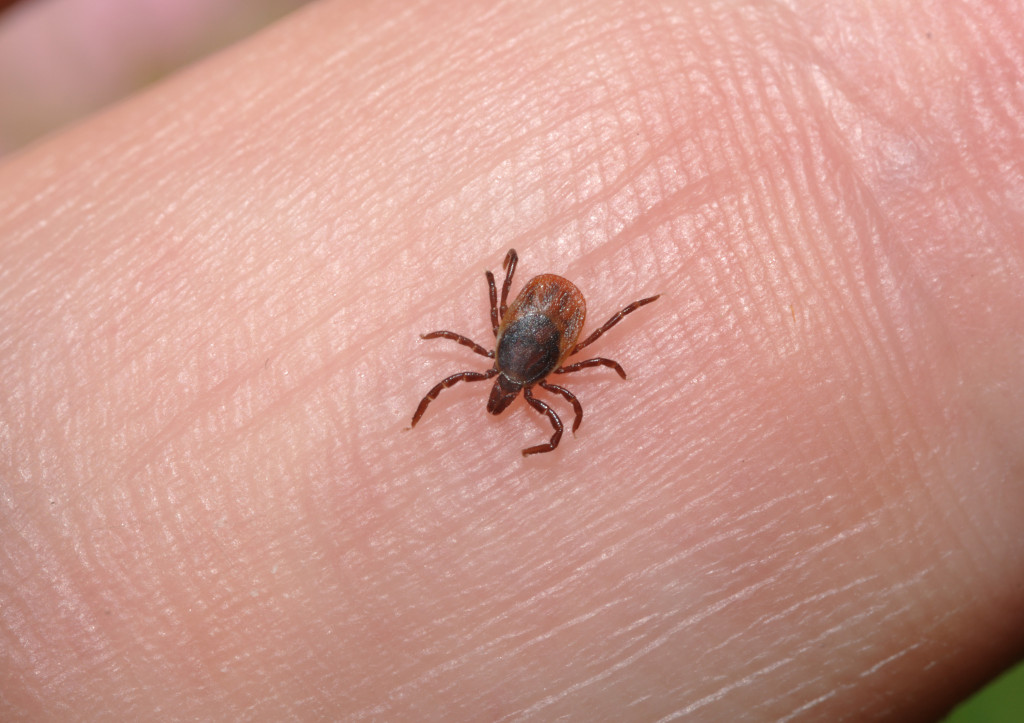People get Lyme disease from four kinds of bacteria. The types of bacteria include Borrelia Afzelii, Borrelia Garinii, Borrelia Burgdorferi, and Borrelia Mayonii. Generally, Lyme disease is caused by infected black-legged ticks, also known as deer ticks.
You are more at risk of Lyme disease if you spend most of your time in wooded and grassy areas. It would be best if you avoided these areas because ticks like to stay in these places. But you can prevent getting Lyme disease with safety precautions.
Lyme Disease Symptoms
The symptoms may vary. However, they usually come in early stages and gradually develop to significant symptoms. In the beginning, you will notice a small red bump in the bitten area. The spot will eventually fade away in a few days.
After a few more weeks, the following symptoms may occur:
- Rashes. The rash may appear between 3 and 30 days after the insect bite. It could go as big as 30 centimeters and isn’t always itchy or painful. However, it’s warm to the touch. This is the first symptom that you should look for after being bitten.
- Common signs. After having rashes, other symptoms like fever, body aches, headaches, lymph nodes, fatigue, and chills may follow.
As days go by, the later symptoms will show one by one. If the early signs are neglected, new symptoms will take place. At this point, the infected person may manifest:
- Joint pain. The person will start to feel pain in different joints, such as the knees. But it could transfer from one joint to another.
- Erythema migrans. The small red bump will start to spread and appear on other parts of the body.
- Neurological problems. Months or years after getting infected, the person will begin to develop inflammation around his brain, or what we call meningitis. Bell’s palsy, or the temporary paralysis of one part of the brain, may also occur.
It would also be helpful if you take note of the less common but symptoms below:
- Hepatitis
- Eye inflammation
- Extreme fatigue
- Heart problems

When to See A Doctor
For safety reasons, it would be wiser to visit your doctor as early as possible. If you’re well aware that you’ve been bitten, a health exam is the best way to know if you are at risk of Lyme disease.
Ideally, if you start to notice signs and symptoms of Lyme disease, you need to contact your doctor right away. Even though the symptoms disappear and you don’t feel sick, it is still recommended to go for a checkup.
Here’s why- not showing symptoms doesn’t always mean that you’re safe from the disease. An untreated Lyme disease can affect other parts of your body slowly. Meaning, your body is slowly getting infected over the years, and you will not even be aware of it.
Prevention
The best way to prevent Lyme disease is to stay away from wooded and grassy areas. You can reduce your risk of getting infected by following the tips below:
- Consider tick control services. Keep your family safe from tick bites as much as you can. And the best way to do that is by getting professional help. Tick control services eliminate the insect from your property and prevent them from coming back.
- Stay covered. Before going to grassy or wooded areas, make sure to cover up. Wear long sleeves, pants, a hat, gloves, and shoes. Don’t go to places with low bushes and long grasses, and stay on the trail as much as possible.
- Tick-proof your yard. You don’t always have to hire professional help. You can prevent Lyme disease by regularly mowing your lawn and cleaning areas where ticks can live. If you have stored woods, place them in sunny areas.
- Always shower. If you live in areas where Lyme disease is prominent, it would be best to shower right away after spending your day outside. Ticks can stay attached to the skin for more than 24 hours, which is the leading cause of Lyme disease.
- You’re not immune. If you have survived Lyme disease once, that doesn’t mean that you developed some sort of immunity. You can still get infected, so stay vigilant.
- Remove the attached tick. If you see a tick in your skin, remove it with a tweezer. Do not crush it on your skin. Dispose of the tick by placing it in alcohol or flushing it down the toilet.
Lyme disease is curable. So you don’t have to panic if you are diagnosed with it. However, early diagnosis and treatment play a crucial role in the success of the treatment. Late diagnosis might require long-term treatment, so call your doctor immediately if you’re starting to show symptoms.
It’s also important to remember that even though most patients may recover fully through antibiotics, the disease may cause long-term damages to the joints and nervous system. To prevent suffering these consequences, keep your home tick-free all the time.

